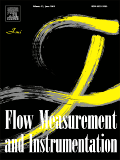
FLOW MEASUREMENT AND INSTRUMENTATION
Scope & Guideline
Empowering Research in Measurement Sciences
Introduction
Aims and Scopes
- Flow Measurement Technologies:
Explores advancements in traditional and novel flow measurement technologies, including ultrasonic, Coriolis, and electromagnetic flow meters, emphasizing their design, calibration, and application in various industries. - Experimental and Numerical Studies:
Focuses on both experimental investigations and numerical modeling of flow dynamics, aiming to improve measurement accuracy and understanding of flow behavior in different systems. - Multiphase Flow Measurement:
Investigates techniques for measuring complex multiphase flows, including gas-liquid and solid-liquid interactions, with applications in oil and gas, environmental science, and chemical processing. - Sensor Development and Optimization:
Covers the development of new sensors, including non-invasive and advanced imaging techniques, as well as optimization of existing measurement devices for enhanced performance. - Machine Learning and Data Analysis:
Integrates machine learning approaches for predictive modeling and data analysis in flow measurement, aiming to enhance measurement accuracy and efficiency through advanced algorithms. - Environmental and Industrial Applications:
Addresses the application of flow measurement technologies in environmental monitoring, water resource management, and industrial processes, highlighting the importance of accurate flow data for sustainable practices.
Trending and Emerging
- Integration of Artificial Intelligence:
There is a significant trend towards integrating artificial intelligence and machine learning techniques into flow measurement systems, enhancing predictive capabilities and operational efficiency. - Non-invasive Measurement Techniques:
Research focusing on non-invasive flow measurement methods is gaining traction, driven by the need for safer and more efficient monitoring solutions in various applications. - Sustainable and Green Technologies:
An increasing emphasis on sustainability and environmental concerns is leading to more research on flow measurement technologies that support green initiatives, particularly in water resource management and energy efficiency. - Advanced Imaging Techniques:
Emerging imaging technologies, such as particle image velocimetry (PIV) and electrical resistance tomography (ERT), are trending, enabling more detailed and accurate flow visualization and analysis. - Dynamic and Real-time Measurement Systems:
There is a growing focus on dynamic and real-time measurement systems that can adapt to changing flow conditions, providing immediate data for better decision-making in industrial and environmental applications.
Declining or Waning
- Conventional Flow Measurement Techniques:
There is a noticeable decline in the publication of studies focused on conventional flow measurement techniques, such as basic mechanical flow meters, as the field shifts towards more advanced and integrated measurement solutions. - Static Measurement Systems:
Research on static measurement systems is becoming less prevalent, likely due to the increasing preference for dynamic and real-time measurement technologies that offer more accurate and timely data. - Hydraulic Modeling without Advanced Computational Techniques:
Studies that rely solely on traditional hydraulic modeling methods without incorporating modern computational techniques and simulations are becoming less common, as the field increasingly embraces advanced modeling approaches.
Similar Journals

ULTRASONICS
Fostering Collaboration Across Acoustic DisciplinesULTRASONICS is a premier international journal published by Elsevier that has been a cornerstone of research in the field of acoustics and ultrasonics since its inception in 1963. With an impressive impact factor, it stands prominently in the Q1 category (2023) of Acoustics and Ultrasonics, ranked 6th out of 44 in Physics and Astronomy, placing it in the top 13% of its field. This journal offers a comprehensive platform for the dissemination of innovative research, ranging from theoretical studies to practical applications. Researchers, professionals, and students are encouraged to engage with cutting-edge findings that advance knowledge in ultrasonic technology, medical imaging, non-destructive testing, and other interdisciplinary applications. Although ULTRASONICS does not currently offer open access options, its rigorous peer-review process ensures high-quality, impactful publications that are essential for anyone involved in the field. Located in Amsterdam, Netherlands, the journal continues to uphold its reputation as a leading source of scientific knowledge that aims to facilitate advancements in technology and engineering.
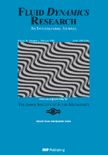
FLUID DYNAMICS RESEARCH
Exploring Interdisciplinary Insights in Fluid FlowFLUID DYNAMICS RESEARCH, published by IOP Publishing Ltd, is a pivotal journal dedicated to advancing the understanding of fluid dynamics through interdisciplinary research that spans several domains including mechanical engineering and physics. With an ISSN of 0169-5983 and E-ISSN 1873-7005, this journal provides a vital platform for researchers aiming to disseminate new findings and theoretical advancements in fluid flow and transfer processes. As of 2023, FLUID DYNAMICS RESEARCH holds a commendable position within the academic community, ranked Q3 in fluid flow and transfer processes, mechanical engineering, and miscellaneous physics and astronomy categories. The journal showcases a diverse array of articles that not only inspire collaboration among professionals and students but also ensure that theoretical and experimental studies are accessible for further development in the field. Operating from the United Kingdom, the journal offers a unique opportunity for scholars worldwide to contribute to the vibrant community dedicated to understanding the complexities of fluid dynamics, even as it anticipates converging its years of research from 1986 to 2024.

Neurosonology and Cerebral Hemodynamics
Transforming Understanding of Cerebral HemodynamicsNeurosonology and Cerebral Hemodynamics is a notable academic journal published by the Bulgarian Society of Neurosonology & Cerebral Hemodynamics, dedicated to advancing the field of neurosonology and exploring the dynamics of cerebral blood flow. With an ISSN of 1312-6431, this journal serves as a vital platform for researchers, clinicians, and students interested in the latest methodologies and clinical applications related to ultrasound techniques in neurovascular studies. While the journal does not currently have open access options, it remains a respected source for peer-reviewed articles that contribute to both theoretical insights and practical advancements in neurosonology. The journal aims to disseminate cutting-edge research and foster collaboration among professionals in neurology, radiology, and vascular biology, thereby enhancing the understanding of cerebral hemodynamics in health and disease. As the field continues to evolve, Neurosonology and Cerebral Hemodynamics plays a critical role in shaping future research and clinical practices.
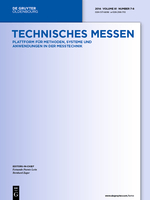
tm-Technisches Messen
Unveiling Breakthroughs in Measurement and Instrumentationtm-Technisches Messen is a reputable academic journal published by WALTER DE GRUYTER GMBH, focusing on the field of engineering, specifically in Electrical and Electronic Engineering and Instrumentation. With a rich history dating back to 1931, this journal serves as a critical platform for disseminating research, innovations, and developments relevant to measurement and instrumentation technologies. Despite its current quartile rankings of Q3 in Electrical and Electronic Engineering and Q4 in Instrumentation for 2023, the journal continues to attract submissions from leading researchers, offering insights that drive advancements within these fields. Researchers and practitioners can access a wealth of knowledge through this publication, fostering collaboration and sparking new ideas. Located in Berlin, Germany, the journal operates without an open-access model, making it essential for universities and institutions to play an integral role in supporting their library access to this valuable resource. As the journal continues to evolve through 2024 and beyond, it remains a significant contributor to the global discourse in measurement technologies, making it a must-read for anyone involved in these dynamic areas of study.
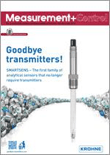
MEASUREMENT & CONTROL
Navigating the Landscape of Advanced Research and TechniquesMEASUREMENT & CONTROL is a prominent journal published by SAGE PUBLICATIONS LTD, dedicated to advancing the fields of applied mathematics, control systems, and instrumentation. With an ISSN of 0020-2940 and an E-ISSN of 2051-8730, this open-access journal has been serving the academic community since 1968, ensuring that essential research findings are accessible to all. As of 2023, it is recognized within the Q3 quartile of Scopus rankings in key categories including Applied Mathematics, Control and Optimization, and Instrumentation, highlighting its relevance in an ever-evolving scientific landscape. The journal not only fosters high-quality research but also encourages the exchange of innovative ideas and techniques, making it an essential resource for researchers, professionals, and students alike. With a focus on the latest advancements and methodologies, MEASUREMENT & CONTROL remains a vital platform for disseminating knowledge and fostering collaboration within these interdisciplinary fields.
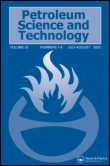
PETROLEUM SCIENCE AND TECHNOLOGY
Exploring the intersection of engineering and energy technology.PETROLEUM SCIENCE AND TECHNOLOGY, published by Taylor & Francis Inc, is a pivotal journal dedicated to advancing the multidisciplinary field of petroleum engineering and related technologies. With an ISSN of 1091-6466 and an E-ISSN of 1532-2459, this journal serves as a vital platform for disseminating research in areas ranging from geotechnical engineering to energy technology. As of 2023, it is recognized in the Q3 quartile across several categories, including Chemical Engineering and Fuel Technology, signifying its respectable standing within the academic community. With a convergence timeline from 1997 to 2024, the journal continuously addresses crucial issues in the energy sector, making it essential reading for researchers, industry professionals, and policy-makers alike. Although not an open access journal, its rigorous peer-reviewed articles contribute significantly to the advancement of knowledge and innovation within these fields, reflecting the journal's commitment to promoting scientific understanding and practical applications.
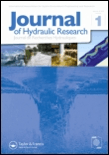
JOURNAL OF HYDRAULIC RESEARCH
Elevating Standards in Hydraulic Research and PracticeJOURNAL OF HYDRAULIC RESEARCH, published by TAYLOR & FRANCIS LTD, serves as a leading platform for the dissemination of groundbreaking research in the fields of civil and structural engineering as well as water science and technology. With its inception in 1963 and a focus that spans to 2024, the journal holds a notable reputation, categorized in the Q2 quartile in both engineering and environmental sciences, indicating its significant impact on contemporary research. It is indexed under ISSN 0022-1686 and E-ISSN 1814-2079, allowing for a comprehensive reach to professionals and scholars worldwide. The journal regularly features high-quality articles, fostering an academic community dedicated to innovative hydraulic research, sustainable water management, and engineering advancements. Researchers and practitioners benefit from the rigorous peer-review process that ensures the highest standards of scholarly excellence in every published work. As part of its commitment to knowledge dissemination, JOURNAL OF HYDRAULIC RESEARCH remains an essential resource for anyone engaged in the dynamic interplay of water and engineering sciences.

Advances in Aerodynamics
Connecting Researchers to the Heart of Aerodynamics.Advances in Aerodynamics is a premier scholarly journal published by SPRINGERNATURE, dedicated to the innovative fields of Aerospace Engineering, Civil and Structural Engineering, Mechanical Engineering, and various aspects of Modeling and Simulation. Since its inception in 2019, this open-access journal has rapidly gained recognition, achieving a commendable Q1 ranking in several engineering categories as of 2023. With its compelling focus on pioneering research and advancements in aerodynamics, it serves as an essential platform for original research articles, reviews, and technical notes that address both theoretical frameworks and real-world applications in sustainable engineering practices. With an impact factor fostering its prominence and visibility in the academic community, the journal provides accessible content that fosters knowledge dissemination among researchers, industry professionals, and students alike. Situated in Singapore and with a commitment to rigorously peer-reviewed research, Advances in Aerodynamics is positioned to play a pivotal role in shaping the future of aerodynamics and its applications across various engineering disciplines.
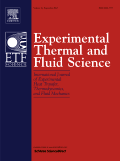
EXPERIMENTAL THERMAL AND FLUID SCIENCE
Elevating thermal and fluid science with impactful research.EXPERIMENTAL THERMAL AND FLUID SCIENCE is a prestigious academic journal published by Elsevier Science Inc, dedicated to advancing the fields of thermal and fluid sciences. With a strong focus on innovative experimental research, it plays a crucial role in disseminating new knowledge and techniques across multiple domains, including Aerospace Engineering, Chemical Engineering, Fluid Flow and Transfer Processes, Mechanical Engineering, and Nuclear Engineering. Holding a notable impact factor and ranking in the Q1 quartile across these categories since 2023, the journal is recognized for its high-quality contributions, which appeal to a diverse audience of researchers, industry professionals, and students alike. Additionally, with dedicated coverage from its inception in 1988 to projections extending through 2025, EXPERIMENTAL THERMAL AND FLUID SCIENCE provides a vital platform for sharing advancements in experimental techniques and findings that shape the future of engineering and applied sciences.

Ingenieria UC
Pioneering Research for a Sustainable Engineering LandscapeIngenieria UC is a distinguished academic journal published by Universidad Carabobo, focusing on the dynamic and evolving field of engineering. As an Open Access journal since 1992, it ensures that groundbreaking research and innovative findings are accessible to a global audience, fostering collaboration and knowledge sharing in the engineering community. With its ISSN 1316-6832 and E-ISSN 2610-8240, Ingenieria UC is committed to disseminating high-quality research that spans various engineering disciplines, including civil, mechanical, electrical, and systems engineering. The journal not only serves as a platform for scholarly exchange among researchers, professionals, and students but also plays a significant role in advancing engineering practices and education in Venezuela and beyond. Researchers aiming to disseminate their work in a reputable forum will find Ingenieria UC to be an invaluable resource that aligns with contemporary academic and industrial developments.